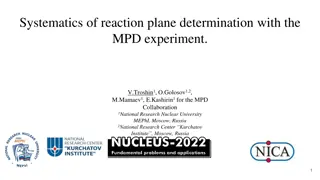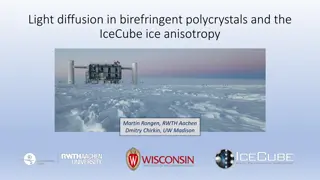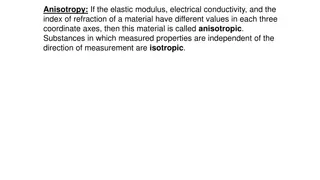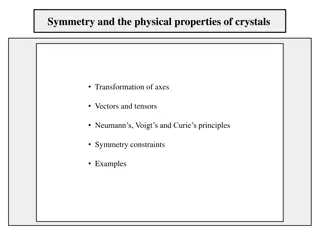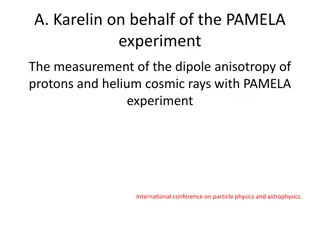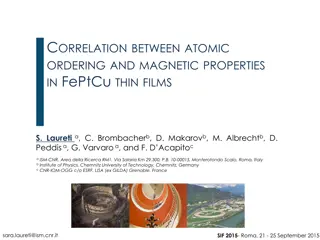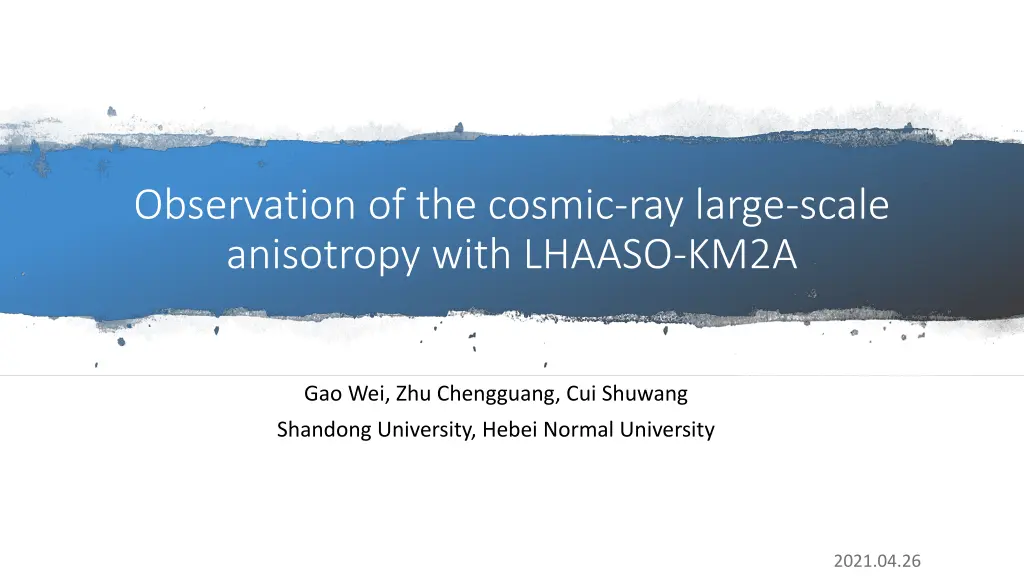
Observation of Cosmic-Ray Large-Scale Anisotropy
Explore the recent study on cosmic-ray large-scale anisotropy observed by LHAASO-KM2A, revealing insights into the origin and propagation of cosmic rays. The data selection process, energy reconstruction, resolution, and comparison with other studies are discussed, culminating in significant findings about anisotropy intensity during the solar cycle. Discover the observed anisotropy trends and implications for future research in this domain.
Download Presentation

Please find below an Image/Link to download the presentation.
The content on the website is provided AS IS for your information and personal use only. It may not be sold, licensed, or shared on other websites without obtaining consent from the author. If you encounter any issues during the download, it is possible that the publisher has removed the file from their server.
You are allowed to download the files provided on this website for personal or commercial use, subject to the condition that they are used lawfully. All files are the property of their respective owners.
The content on the website is provided AS IS for your information and personal use only. It may not be sold, licensed, or shared on other websites without obtaining consent from the author.
E N D
Presentation Transcript
Observation of the cosmic-ray large-scale anisotropy with LHAASO-KM2A Gao Wei, Zhu Chengguang, Cui Shuwang Shandong University, Hebei Normal University 2021.04.26
Introduction Data selection Anisotropy with KM2A Conclusion
Introduction Anisotropy, a probe to understand the origin and propagation of Cosmic rays ARGO-YBJ Tail-in Loss-cone Bartoli et al. 2018
Data selection 2020001-20200366 Half array of KM2A Zenith < 50 Core within the array About 1.5 1010 events are used
Energy reconstruction array of KM2A, normalized to Gaisser model
Energy resolution logE:4.50~4.75 logE:4.25~4.50 logE:3.50~4.00 logE:4.00~4.25 logE:5.50~6.00 logE:5.00~5.50 logE:4.75~5.00 logE:> 6.00
Anisotropy VS Energy Number (10^8) Bin log(Erec) Energy (TeV) 1 3.5~4.0 8.22 2.96 2 4.0~4.25 14.23 17.36 3 4.25~4.5 24.44 44.34 4 4.5~4.75 41.59 47.75 5 4.75~5.0 72.40 26.24 6 5.0~5.5 150.02 15.10 7 5.5~6 471.60 2.10 8 >=6 1628.36 0.30
Conclusion The large-scale anisotropy in the direction of cosmic rays are observed by KM2A up to 1.6 PeV, and the change of the morphology of anisotropy indicating different origin of cosmic-ray anisotropy. The intensity of anisotropy in solar cycle exceed the expected Compton-Getting effect, the origins are still confused. Next: anisotropy of light and heavy component of cosmic rays .
LHAASO-WCDA-1pont Zenith<50 2019091-366, nfit>=50, smooth 15degree, ~3.7TeV, 2.85e10 events Preliminary Nfit E(TeV) Num 10^8 50-150 3.00 22.28 150-250 6.96 35.97 250-499 14.71 21.14 >=500 35.91 5.11 15





